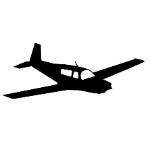Fuel Tank Poll
Fuel Tank Poll
118 members have voted
-
1. Please choose the answer that best describes your Mooney's fuel tanks.
-
Original - don't leak a drop - never patched or resealed.22
-
Original - have some minor leaks - never patched or resealed.6
-
Have been patched/repaired - don't leak a drop.20
-
Have been patched/repaired - still leak or leaking again.20
-
Have been stripped and resealed - don't leak a drop.23
-
Have been stripped and resealed - still leak or leaking again.6
-
Had bladders installed - don't leak a drop.21
-
-
2. If your tanks have NEVER been patched/repaired or stripped/resealed, and DO NOT leak, how old is your plane? Otherwise please choose "N/A".
-
10 years or less.2
-
11-20 years.6
-
21-30 years.9
-
31-40 years.17
-
41-50 years.3
-
Older than 50 years.3
-
N/A78
-
-
Members Online
- EricJ
- Parker_Woodruff
- slowflyin
- Sherman17
- ottorecker
- ta2too
- skykrawler
- Mister_Bevilaqua
- MarquezJC
- SKI
- TCC
- midlifeflyer
- Shorty
- Paul Thomas
- redbaron1982
- takair
- Marc_B
- Skates97
- AndreiC
- Fly Boomer
- eman1200
- TheAv8r
- Fritz1
- Scooter
- Nico1
- jeremyc209
- sheriffburrell
- FlyingScot
- ad5ut
- PeteMc
- 1980Mooney
- thomas1142
- Vulcan81
- VA FLYER
- natdm


Recommended Posts
Join the conversation
You can post now and register later. If you have an account, sign in now to post with your account.